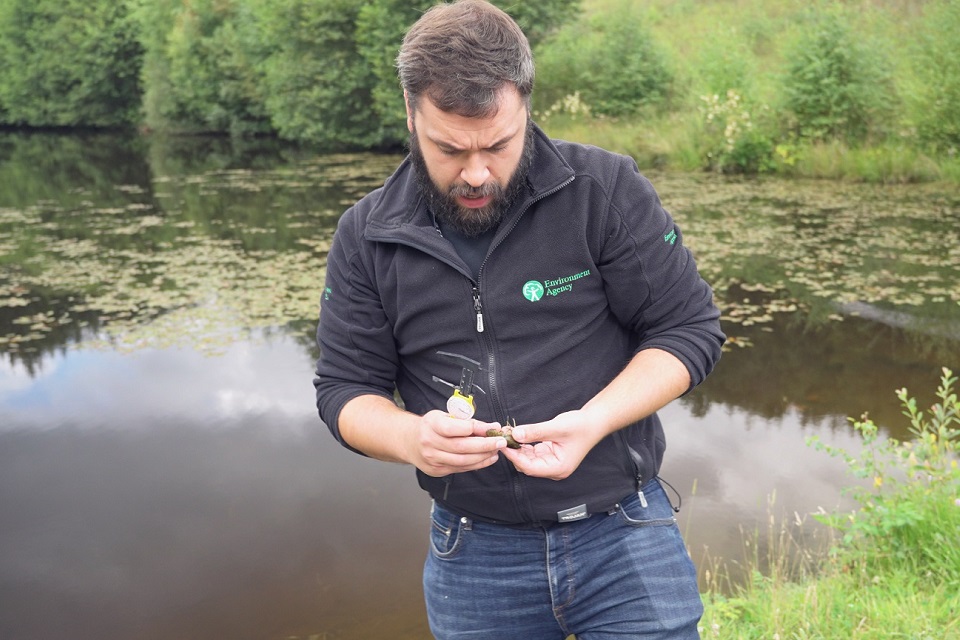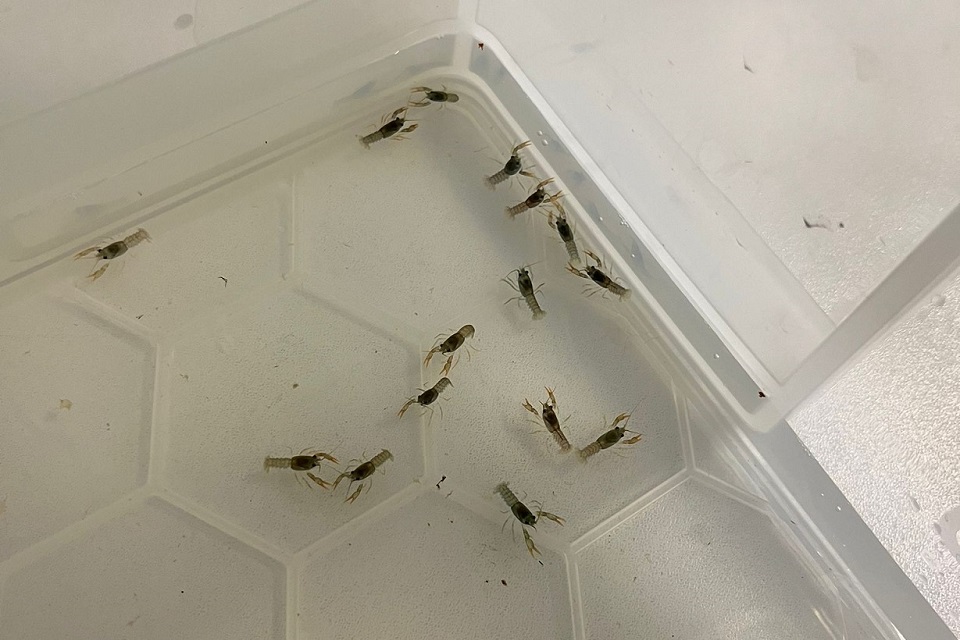In June, Environment Agency specialists rescued the population from Pudsey Beck in Leeds as part of a wider operation to safeguard the future of the native species in the River Aire catchment.
Those rescued, which included females carrying eggs, were kept for safekeeping in quarantine in tanks at the University of Leeds before passing health checks.
The crayfish - which now includes 300 babies born after the rescue took place - have been released into a Yorkshire Water-managed reservoir in North Yorkshire - known as an 'ark' site where they can live and breed safe from the threat of the invasive species.
The rescue and release is part of work by the Environment Agency and partners to carry out operations to rescue the native species after the invasive American Signal crayfish and a disease it carries - crayfish plague - moved through parts of the River Aire catchment.
In June, native crayfish rescued from Meanwood Beck and kept in quarantine at York Gate Garden were released into Bodington Pond, an ark site at the University of Leeds, as part of the project.

Fisheries officer Dan Chadwick checks over the native crayfish before they are released
Native crayfish plays vital role
Environment Agency fisheries officer Dan Chadwick said:
With so few populations of native crayfish remaining, we must act to preserve what we can.
The endangered white clawed crayfish plays a vital role in keeping our waterways healthy and as a source of food for other native species, so it's important we take action to ensure its survival.
Those rescued from Pudsey Beck - including babies that have been born since the rescue - have a new biosecure home where they are safe from invasive signal crayfish and the plague they carry.
We will continue to work with our partners to safeguard the future of the native species, including carrying out rescues and finding them new safe homes.
Rare white clawed crayfish are the UK's only native, freshwater crayfish, and are most at risk from the signal crayfish, which spread crayfish plague and outcompete them for food. They have struggled to survive after the more aggressive signal crayfish population has taken hold across the country.
The Agency is working with partners including Yorkshire Water, Yorkshire Wildlife Trust and the University of Leeds to develop a network of ark sites, which are locations in catchments where invasive crayfish, and crayfish plague, are absent.
Here, native crayfish populations can be protected, away from threats. In the future, it's hoped to use crayfish from these ark sites to repopulate watercourses.

Hundreds of baby crayfish were also released as part of the operation
Work is critical to save native species
Yorkshire Water's habitats and partnerships specialist Liz Norman added:
This work is critical in helping protect the future of our native crayfish and as a water company with reservoirs that are no longer in use for supply we can offer them a safe environment to thrive, away from the threats of invading signal crayfish.
Alison Dunn, Professor of Ecology in the School of Biology at the University of Leeds, who has been involved throughout the project, said:
Invasive species and diseases can have serious consequences on our environment such as loss of biodiversity and extinction of native species. The good news is there are things you can do to help keep native species safe.
If you're out and about in the environment - such as walking your dog, working or fishing - please make sure to thoroughly check, clean and dry anything that's been in contact with the water or riverbank, such as equipment and clothing. This will reduce the risk of spreading invasive species and diseases.
Anything that has contact with the water and riverbank needs to be cleaned thoroughly, using hot tap water if possible, and dried until it has been dry for 48 hours. The use of an environmentally friendly aquatic disinfectant is also recommended. This will make sure all aquatic diseases and invasive species are killed.






